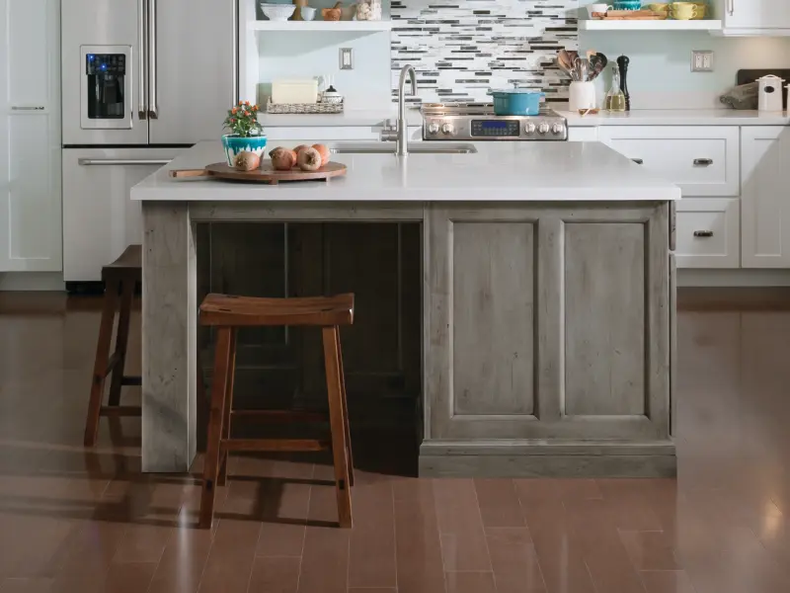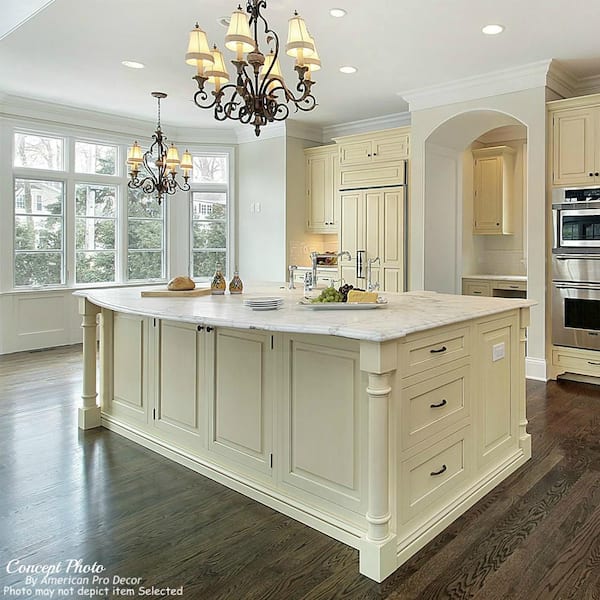Kitchen Island Legs: Enhance Your Kitchen with Solid Support
A Guide to Picking the Perfect Cooking Area Island for Your Home
Understanding your cooking area's spatial dynamics is the initial step, making sure that the island fits effortlessly without interfering with the flow. The option of products and finishes likewise plays a crucial role in balancing the island with your kitchen area's total design.
Assessing Your Room
Before selecting a cooking area island, it is important to thoroughly analyze your area to ensure the enhancement will be both practical and visually pleasing. Begin by measuring the offered area, consisting of the width, length, and elevation of the kitchen. Precise dimensions are essential to prevent acquiring an island that bewilders the space or one that is disproportionately little.
Think about the existing design and just how the island will certainly incorporate with the present traffic circulation. A well-placed island should not obstruct pathways or restrain access to essential devices, such as the fridge, sink, and oven. Leave adequate clearance room-- typically around 36 to 48 inches on all sides-- to allow for comfy motion and work space efficiency.
Next, evaluate the natural light and sightlines within your cooking area. An island that blocks a window or disrupts visual cohesion can make the area feel dark and confined. Think of how the island's placement will certainly impact lights and presence, ensuring it boosts rather than interferes with the kitchen's atmosphere.
Establishing the Function
Figuring out the function of your cooking area island is an essential action in guaranteeing it satisfies your particular demands and preferences. Prior to delving right into design or dimension considerations, it is important to clarify what primary feature the island will certainly serve in your kitchen area. Will it be a central center for dish prep work, a laid-back eating area, or potentially an additional storage space service?
Furthermore, ample counter room for cutting and blending, along with accessible storage for kitchen devices and active ingredients, can change the island into an effective workstation. Alternatively, if the island is meant to offer or help with social interactions as an eating area, seating arrangements become critical.

Selecting the Right Size
Picking the best size for your cooking area island is an equilibrium of performance and room optimization. An optimal kitchen area island ought to supply adequate office while making certain that movement around the kitchen continues to be unimpeded. Begin by determining your kitchen area space; a minimal clearance of 36 to 42 inches around the island is necessary to permit comfortable motion and accessibility.
The dimensions of the island ought to reflect its desired use. If the island will certainly serve mainly as a prep location, a width of 24 to 36 inches may be adequate.

Finally, make certain that the island's dimension complements the anchor general kitchen layout, preventing any frustrating visibility that might detract from the kitchen's visual and energy - kitchen island legs. Cautious preparation and accurate measurements will certainly help you achieve a harmonious and reliable kitchen area setting
Choosing Materials and Finishes
After figuring out the proper dimension for your kitchen island, the next step involves selecting suitable materials and surfaces. The selection of products substantially influences both the visual allure and capability of your cooking area island. Popular materials for counter tops include granite, butcher, and quartz block, each offering distinctive advantages.
Along with the kitchen counter, consider the materials for the island base. Strong timber provides a timeless, tough appearance, while stainless steel gives a streamlined, modern-day look and is very easy to tidy. Repainted finishes can introduce a dash of shade, with options varying from muted pastels to bold, vivid colors.
When choosing finishes, guarantee they match the total kitchen area layout. Matte coatings provide a contemporary feeling, while glossy surfaces can create a refined, high-end appearance. Take note of the longevity of finishes, specifically in high-traffic areas, to maintain the island's look gradually. Picking the right materials and coatings will certainly improve both the performance and aesthetic charm of your kitchen island.
Integrating Functional Functions
Integrating practical functions right into your kitchen island can considerably enhance its energy and convenience, transforming it into a flexible centerpiece of your kitchen area. One essential attribute to take into consideration is extra storage. Incorporating cupboards, cabinets, and open shelving can supply much-needed area for cookware, tools, and tiny appliances, find more info aiding to keep a clutter-free setting.
Another beneficial addition is an integrated sink or cooktop, which can improve dish prep work and clean-up processes. A sink can assist in jobs such as cleaning veggies and cleaning up dishes, while a cooktop can permit cooking directly on the island, fostering a more social and interactive food preparation experience.
Think about this incorporating seating options, particularly if your cooking area functions as an informal dining location. Bar feceses or integrated benches can change the island into a multifunctional room for meals, research, or casual gatherings.
Last but not least, incorporating electric outlets into your kitchen island can improve its functionality. Outlets give hassle-free gain access to for little cooking area devices, charging stations for digital gadgets, and extra lighting choices.
Conclusion

Prior to choosing a kitchen area island, it is important to thoroughly assess your area to guarantee the addition will certainly be both functional and aesthetically pleasing.Selecting the ideal size for your kitchen area island is an equilibrium of capability and room optimization. kitchen island legs. An optimal kitchen island should supply enough work area while making sure that movement around the cooking area stays unimpeded.Integrating useful functions into your kitchen area island can substantially improve its utility and ease, changing it into a functional centerpiece of your cooking area.In conclusion, selecting the optimal kitchen island demands a thorough analysis of the available space, clarity regarding its key feature, and careful factor to consider of the suitable size and materials